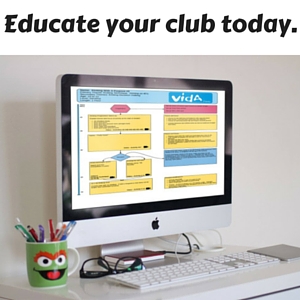by Vida Footy | Nov 26, 2015 | Coach Development
Last week we discussed mindfulness in the AFL. Here is the second instalment on the issue.
Remember, to learn more about mindfulness in sport – and how to integrate it into your daily practise; contact Vida Mind/Dr Damien Lafont info@vidamind.com.au
(more…)
by Vida Footy | Nov 26, 2015 | Coach Development
Being an AFL player requires a tremendous amount of talent, fitness, physical ability, games sense and endurance. However, a previously overlooked part of a players attributes is their minds. Players are now learning how to better engage their minds to help with the physical demands of a game of football.
The following article from Adam Baldwin from the AFL players association highlights these factors and how players are going about improving their mindfulness.
The AFL is an extremely competition industry. The difference between first and eighteenth might be huge on the scoreboard but in the tangibles it is miniscule. Every team has talent, every team is fit, every team is full of competitors, every team has a clear game plan ingrained from precise a preseason and every player who takes the field gives every ounce of effort. Every club is searching for an extra one per cent that can elevate it above the rest.
Where does that one per cent that lie? Why do we see upsets in results throughout the years? Why do we see variance in a team’s output each week? Jack Dyer used to say that football is a game “played mostly between the ears” and the role of sports psychology has long been recognised as a crucial element of success. But in a time where professional athletes are placed on a pedestal, poor performance due to mindset isn’t tolerated by clubs and fans. What do players actually mean when they say their “mindset wasn’t right”? AFL Players’ Association psychologist and wellbeing services manager Dr Jo Mitchell says reaching optimum mindset for sporting performance is crucial but difficult to achieve, especially with the range of expectations and distractions players and teams carry. “Have you ever been driving from home to work and suddenly you are there but mentally you are elsewhere. It’s that experience where physically your body is there, but mentally it is off somewhere else. You are actually not present,” Dr Mitchell said.
“If you want to perform at your best, whether that’s as an athlete or a parent or in any aspect of your life then you need to be there for the important bits. You need to be mentally and physically present in that space.”
The Players’ Association run programs for players based on the concept of mindfulness; a process of awareness that involves paying attention to what is relevant to performance in the moment as opposed to being caught up in thoughts or analysis that only serve as a distraction.
“On the field you need to be in the moment, if your head is going back to what happened a few minutes earlier in the game you are not mentally there and present and ready to respond to the next thing to happen,” Dr Mitchell said.
Mindfulness is most commonly associated with meditation. The AFL Players’ Association delivers initiatives to help players build their mindfulness skills by tuning in to performing practical every-day things “The idea is that you tune into your senses. If you can touch, taste, hear, see and smell you are present. If you are analysing what you can touch, taste, hear, see and smell you have disconnected again. But if you are just in that moment observing and are present in that process – you are being mindful,”. “By spending two or three minutes every day when you brush your teeth attending to the process and noticing when your mind drifts and noticing where it has gone, you need to practice the ability to unhook it and then bring it back. It sounds simple but it is actually hard to do.”
Mindfulness has been employed outside the sporting arena by bodies such as the US Marines and it has been embraced by some AFL stars but still has connotations of being “a bit hippy or a bit mystical”. Her team are trying to communicate to the players that their minds require as much training as any other parts of their bodies.
“It’s about working out the neural pathways in your brain that actually help it to fire to become stronger. We want to build a super pathway rather than a really faint connection so that you are really in the right space to be mindful,”.
Professional athletes commonly use techniques such as imagery in their preparation for sporting performance, but mindfulness is a more effective technique because it allows the mind to be flexible and adapt to whatever the game throws up. “Nothing is actually real except your lived experience, I think imagery can be helpful in some circumstances but also it can get in the way as well. “We are all human and if you don’t train that ability to be present and be in the moment variances in the game can throw athletes,”.
Now, through the Manage Your Mind program players have the tools to change this and ensure their mind is as flexible as their spine. The program is a key component of the football apprenticeship program for first year players.
– to learn more about mindfulness in sport – and how to integrate it into your daily practise; contact Vida Mind/Dr Damien Lafont info@vidamind.com.au

